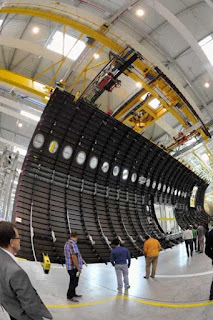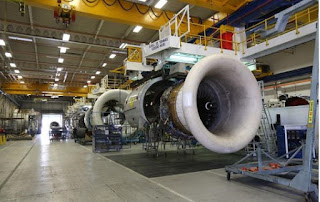Messier-Bugatti-Dowty has been one of the European aircraft manufacturer’s partners for a very long time and is playing a key role on the A350-900 program.
Source: rokbani wael
“We were selected to design and develop the carbon brakes and wheels, and all the systems to steer and maneuver the nose and main gear on the various A350 XWB versions.“
Source: Oliver Louis
More than 300 Messier-Bugatti-Dowty engineers and technicians worked on designing and producing equipment for the A350 XWB.
“We will also be supplying the main landing gear on the A350-900 version,” explained Messier-Bugatti-Dowty Program Director Hélène Moreau-Leroy.
Source: Airbus
“Airbus decided to use tried and tested technologies for its landing gear and systems on its new aircraft, to ensure they were mature at the entry into service, but nevertheless set very ambitious weight targets, which were a major challenge during the development phase,” added Hélène Moreau-Leroy.
To meet this requirement for lighter landing gear, Messier-Bugatti-Dowty significantly increased high-resistance titanium content in its various parts (in particular in its structural components).
Source: Gilles Astre
7 Messier-Bugatti-Dowty plants are working on A350 XWB production in France, the US, Canada, China and the UK.
There is another notable novelty; the A350 XWB is the first Airbus with a guidance system using differential braking, which makes it possible to steer the plane on the ground if the hydraulic or electronic steering systems fail.
“The aircraft will also come with our 3rd-generation tire-pressure monitoring and wireless information transmission system,” added the Program Director.
“And the efforts to cut mass during the wheel and brake engineering phase allowed us to slash weight compared to rival solutions.”
Source: Airbus
Based on the press release "A350 XWB: a high-flying landing system"











































